Keep the Moths that Eat Clothes Out of Your Home
How to prevent moths that eat clothes from infesting your home and ruining your clothes.
My brother recently asked me to mend the moth holes in two of his favorite cashmere sweaters. I almost hate to say this out loud because as soon as I do, it will change, but I’ve been lucky in that I’ve never had moth damage in my clothes before. (argh…now I’m all nervous)
I enjoyed repairing the sweaters; it was oddly rewarding. That being said, it was only two sweaters, a total of probably ten holes. I’m not sure I’m ready to go into business mending moth holes.
So, when I sent them back to him, I wanted to give both of us some guidance on preventing moths and moth holes in the future. Talk about going down a deep, dark hole! Suffice it to say; I have just ordered some moth traps because I am now appropriately paranoid about getting an infestation of these little nasties.
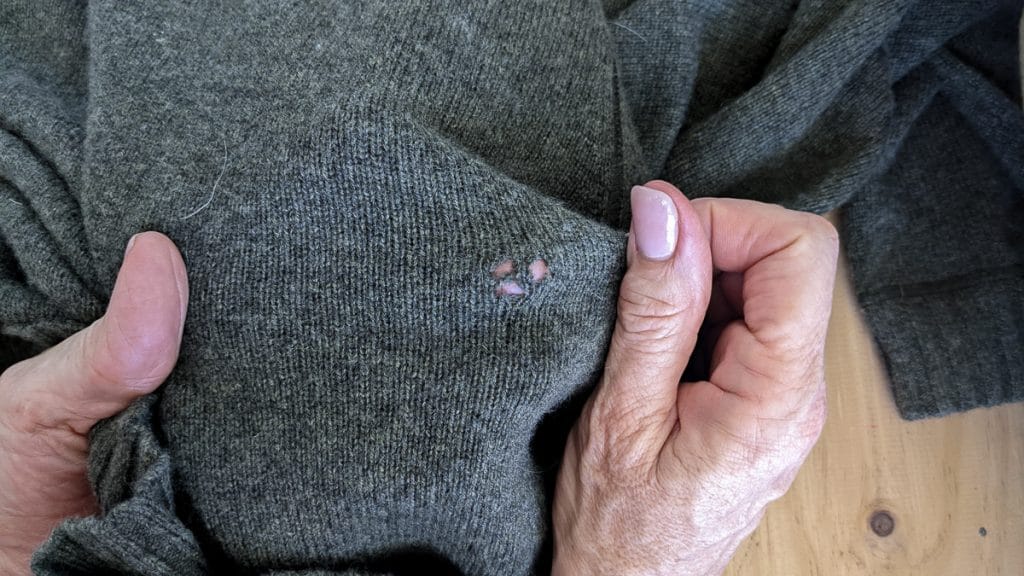
Table of Contents
Now, I have had pantry moths before; in fact, I keep those pantry pest traps around just in case. But clothes moths are entirely different critters. I mean, they are all moths, but pantry moths don’t eat clothing and vice versa.
What Kind of Moths Eat Clothes?
Clothing moths are typically one of two varieties; the casemaking clothes moth and the webbing clothes moth. The adult moths generally are about 1cm or 1/3″ long and yellow or grayish. As a point of reference, if you’ve seen those pantry moths (also known as Indian Meal Moth), the clothes moths can be only half the size of the pantry moth.
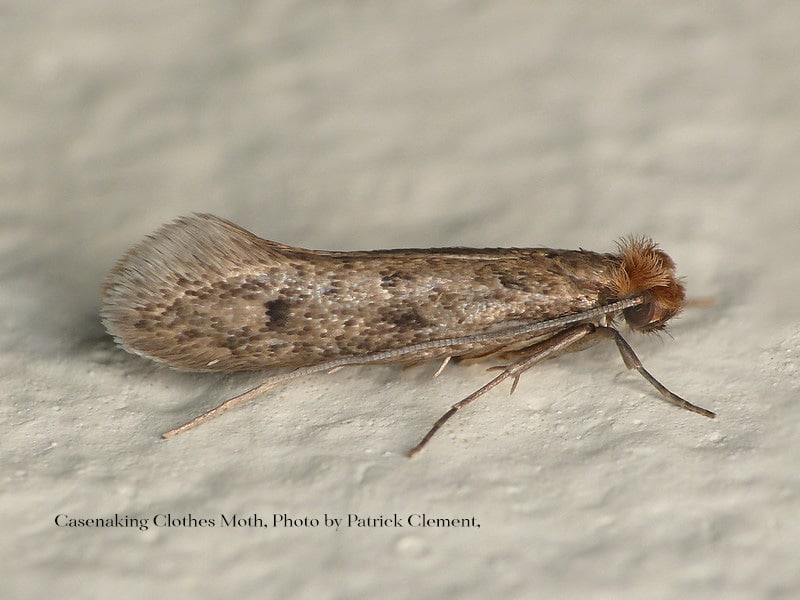
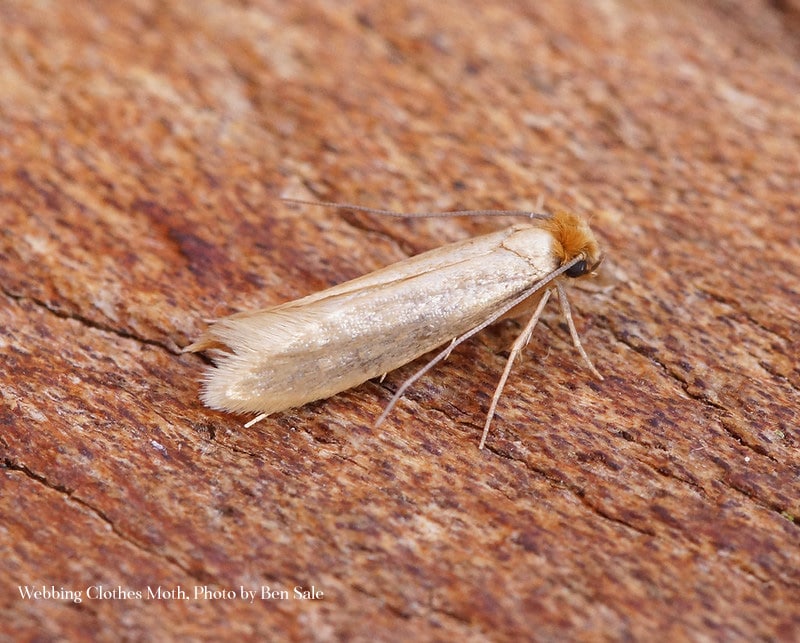
Creative Commons License, CC by 4.0
But, if you see one of these clothes moths and you eliminate it, don’t feel confident that you’ve solved your problem. The larvae of the moths do the damage, as the adult moths don’t even have mouths! Fully developed larvae will be approximately 1/2″ long.
I don’t want to ruin your breakfast, but it is essential to know what you need to look for if you find moth holes in your favorite sweater. So this little critter is what eats the holes in your clothes. The case-making (or casebearing) moth larva (shown below) makes its case from the fibers of your favorite sweater! The larva of the webbing moth leaves behind a web, like that of a spider.
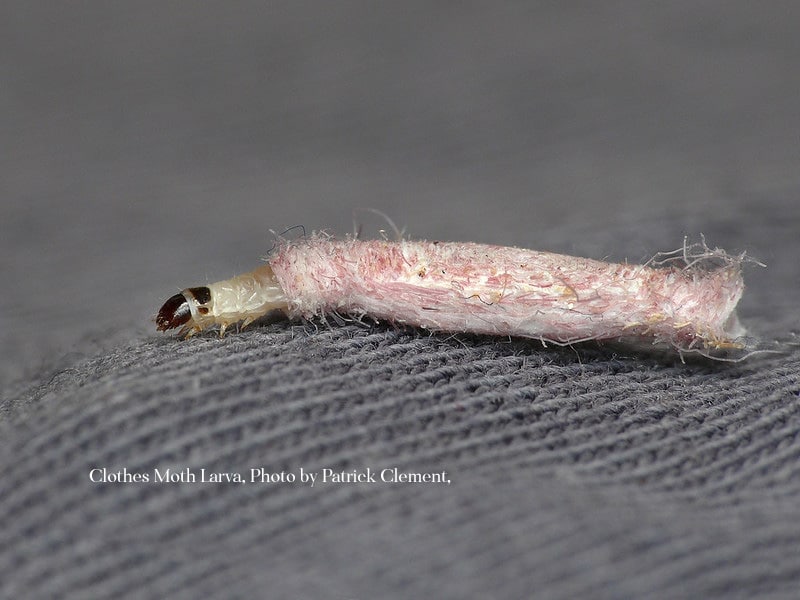
Creative Commons License, CC by 4.0
The larvae feed on keratin, which is found in animal fibers (think wool, fur, silk, feathers, felt, and leather), animal fiber blends (wool/cotton, wool/acrylic, silk/cotton, etc.), and fur from the pets in your home (your cotton sweater with cat or dog fur on it). While they won’t actively eat the cotton, they may take a few nibbles before realizing that it’s not an animal fiber.
And here’s the bad news (well, the worse news), they can stay in this larva stage for up to 2 1/2 YEARS!!!
How to Prevent Clothes Moths
Now that you are as freaked out as I am let’s talk about how to prevent these little buggers in the first place. Unlike some moths, the moths that eat clothes are drawn to dark, damp, warm environments and dirty clothing (body oils, perspiration, food spills, etc.), where they will then lay their eggs.
So, packing away your dirty winter sweaters, blankets, coats, etc… in the basement over the summer is an engraved invitation to clothing moths.
Some of these are affiliate links, and I will earn a small commission off of the sale of these products, but the price you are charged is not affected. You can see my full disclosure policy here.
Clean Your Clothes, Blankets, etc…Before You Store Them Until Next Season.
Not only will you remove any body oils or food spills, but you will also wash away any eggs or larva that may have already taken up residence. And while the moths won’t eat your cotton or acrylics, if they are attracted to those clothing items stored with the woolens, you are back in the same place. So wash everything before you store it for the season.
Don’t use fabric sizing, starch, or softener as the scents attract moths. And make sure everything you store is completely dry! You don’t want to start with a friendly, damp environment.
Dry cleaning is the most effective for killing moth larvae and eggs for items that can’t be washed in hot water. For items that can be washed, use hot water in your washing machine. Most hot water is about 130°; anything above 120° should kill the larvae and eggs. I have used Woolite Dry Clean At Home Sheets to ‘dry clean’ our Pendleton blankets after each winter -instead of taking them to dry cleaner.
Wash Second-Hand Clothes Immediately
If you like to shop at consignment stores or second-hand stores (and who doesn’t!?), make a practice of washing or dry-cleaning those second-hand items before you put them in your closet.
Vacuum and Clean Regularly
Clothing moths are drawn to dark spaces, making most clothes closets inviting. Vacuum and wipe down your closets regularly, making sure to get into the corners and crevices. Once done vacuuming your closets, empty the vacuum bag as it may contain eggs and larvae.
Storage
Once your clothes are clean, tuck them away safely.
- Because cloth moths like dark spaces; clean, transparent containers are best. Make sure that your container is clean before you tuck your clean clothes in for the season. Here are two options for airtight/moisture-proof gasket containers, Sterilite and IRIS Weathertight. If your container is not airtight, go the extra mile and ensure a tight seal with duct tape. Label your container with what it contains.
- Vacuum-sealed storage bags are another great option as they take the little space and guarantee pest-free storage as they remove oxygen and larvae cannot live without that.
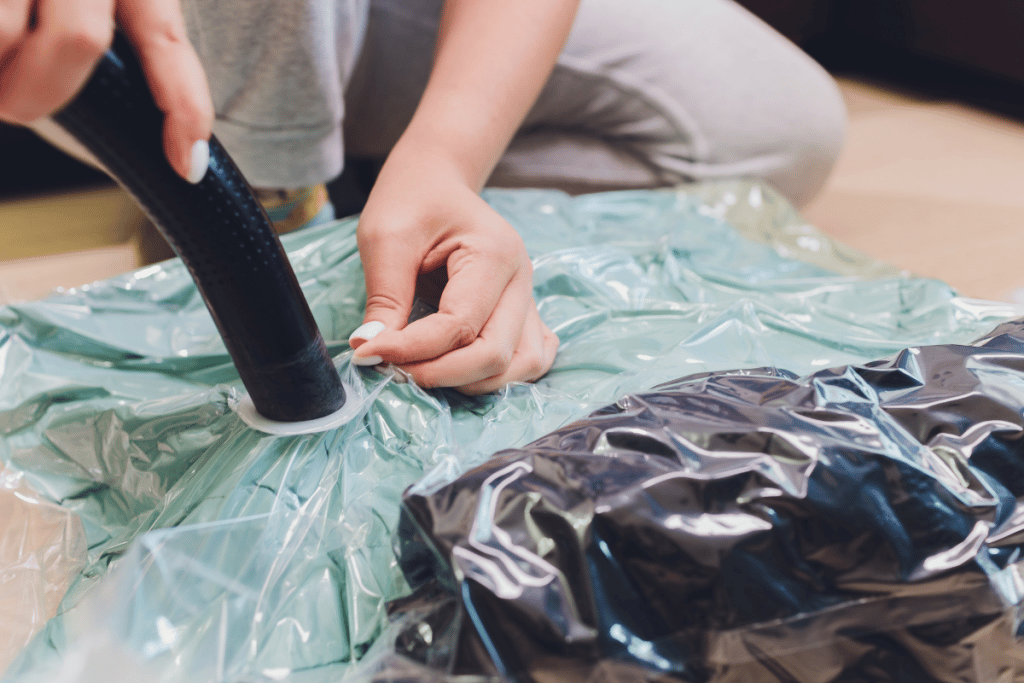
- Zippered Sweater Bags are another option.
- Cardboard boxes attract insects, are dark and can easily be chewed through. Avoid them.
- A cedar closet or chest repels the moths that eat clothes,but needs to be sanded regularly to keep the oil fresh.
- Store clothing in a cool, well-ventilated, dry area. Avoid garages, basements and attics.
Moth Repellents
We are all familiar with mothballs and cedar as moth repellents. Mothballs repel and kill moths that eat clothes and their larvae, but at a cost to our health as well. As they evaporate, they release toxic chemicals. Naphthalene, one of the components of mothballs, is also a toxin released in car exhaust. So, I’m taking a hard pass there.
In investigating cedar, it seems that how it works is that its scent is so powerful that it masks the smell of the keratin that the larvae are looking for, so essentially they starve. There is also evidence that if strong enough, the cedar aroma does kill the larva. However, you have to regularly replenish or sand the cedar as it dissipates over time. It seems the cedar aroma lasts about three months, which means you need to refresh or replace the cedar a minimum of four times a year. Some experts recommend a monthly refresh or replenishment of cedar products.
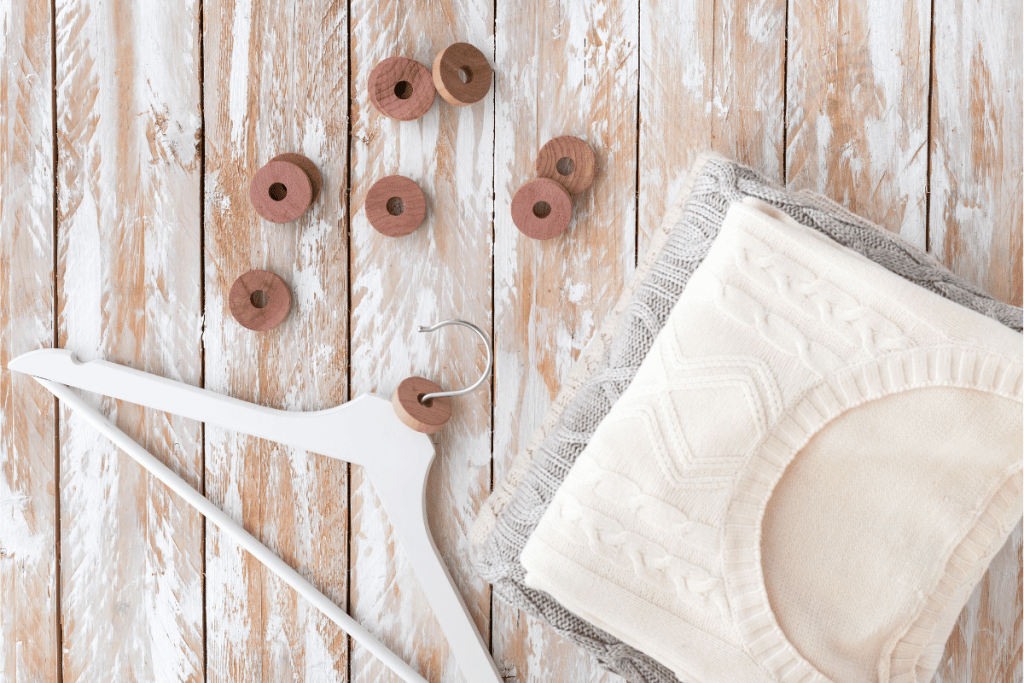
Lavender and Eucalyptus are scents often credited with repelling moths. The keyword again is ‘repel’…they will not kill moths already there. Once again, a monthly refresh with lavender and eucalyptus oil is required.
Moth Traps
I just bought a pack of these. I will hang them in my closets where I have wools and such. They only attract the male moth, but you can’t get too many eggs without a male! And I figure it’ll be a good indicator if I have a moth issue.
OK, armed with all this information, here’s my plan:
My Plan to Prevent Those Moths That Eat Clothes From Munching in My Home
Because I’ve never had a problem before, I’ve been pretty nonchalant about these cloth-eating moths. But now I know I’ve been tempting fate. Here’s what I am going to do, starting immediately:
- I did order these traps. As I said before, if nothing else they will let me know if I have had moth visitors and will at least keep the male population down.
- Before spring, I plan to clean out and vacuum every inch of our closet. I need to continue our closet declutter anyway, so this is a good time to do that.
- Once the closet is clean, I’ll start cleaning my wool and cashmere sweaters in Eucalan (either Lavender or Eucalyptus) as the moths don’t like these scents. Eucalan is a rinse free wool wash; it claims that the residual lavener and eucalyptus repels the moths. I bought some of these sweater bags, I’ll start tucking in my better sweaters in once clean.
- I will start taking some of my husband’s wool suits to the dry cleaner for a good cleaning. Then I will start storing them in suitbags. I know suitbags are not 100%, but they will help. I’ll tuck a lavender.eucalyptus sachet or cedar hanger in with each suit.
- At the end of winter/beginning of spring, I will make sure that the sweaters and coats we have worn are clean.
What Should You Do If You Find Moth Damage in Your Wardrobe?
Don’t panic.
- Go through your closest to confirm that the little nasties have taken up residence. You may find the pupae, cocoon, webbing or casings, larvae, eggs or actual adult moths (alive or dead).
- Give your closest a thorough cleaning and vacuuming, making sure to dump the contents of your canisters in the outdoor trash. Make sure you tackle every crack, crevice and corner, all the rods, shelves…EVERYTHING!

- Remove the clothing that has the damage. If it is beyond repair, then trash it. However, if it can be repaired, (it isn’t really that hard, check this post out), then put it in a ziplock bag and seal it. If it is multiple items, put them in a large bag that can be sealed until you are ready to clean them thoroughly.
- Once you’ve cleaned your closet, time to tackle the clothes.
- Machine washable fabrics should be washed on the hot setting for a minimum of 20 minutes. Once again, most hot water is about 130°; anything above 120° should kill the larvae and eggs. Then, for fabrics that can be dried, machine dry at hottest recommended temperature for at least 30 minutes. Once done, you may want to give them a good shaking outside to dislodge any casing remnants.
- You can also ‘bake’ items that can’t be washed in water. Set your oven at 125° and bake the items for 30 minutes. Be mindful that beads and plastic would melt at this temperature, so avoid items with that trim. If you do go this route, one word (well, really two) FIRE RISK. Only use this method with animal fibers (i.e. no cotton or acrylic or blends with those) and don’t shut the oven door and walk away. You’ll need to hover over the oven for the duration.
- Freezing the items is another way to kill the larvae, but this is a bit more involved as it is requires a ‘shock’ to their little systems by taking your items from a temperature at or above 70°F to 0°F and keeping them at the freezing temperature for at least 72 hours.
- Take the non-machine washable fabrics to the dry cleaner. Inform them of the moth infestation so that they take the proper precautions.
- If you have a widespread infestation, you might want to call professional exterminators.
OK, that was a lot to consume (sorry, I couldn’t resist), but I’m a firm believer that knowledge is power! Ignorant bliss will not prevent moths from eating our clothes, but a few preventative measures will.
Bookmark this page or pin the following image to refer back to this post on Moths that Eat Clothes and how to prevent and treat the infestation.
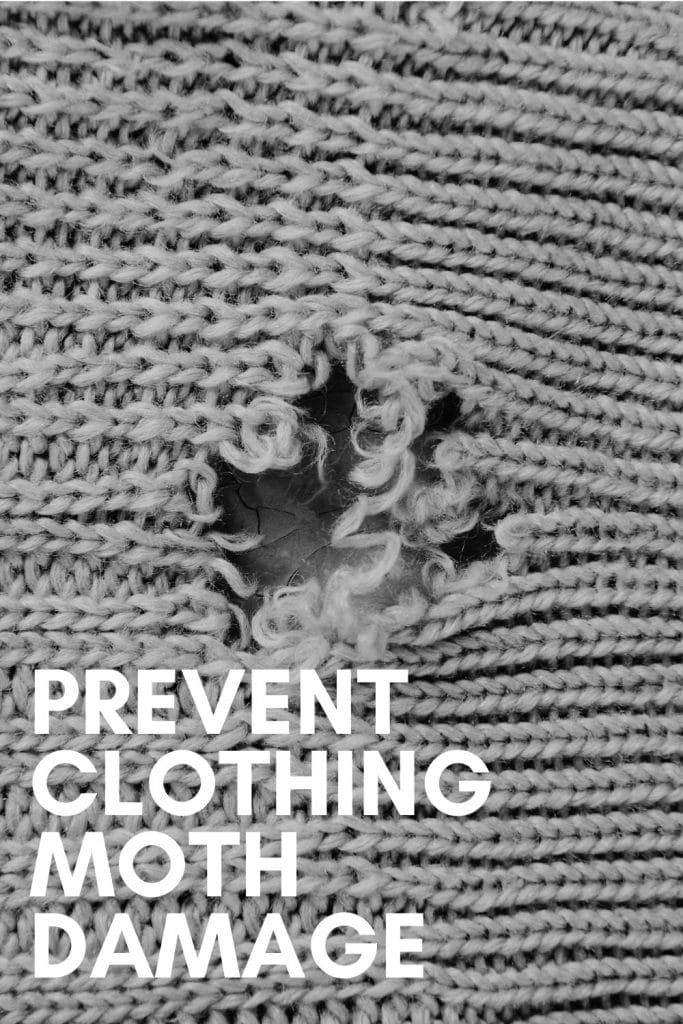
Thanks so much for spending a few minutes of your busy day with me!
To ensure you don’t miss future content, pop your email in the pale green box on the right or click here. I usually send one email weekly, so I won’t inundate your inbox. I’m sensitive to an overflowing email inbox!
We will only use your email address to send you emails, no more than 1-2 weekly. In addition, you will have access to my growing library of knit & crochet patterns and other printables. Check back often as this library will continue to grow. You can unsubscribe anytime by emailing me or clicking on the “unsubscribe” link at the bottom of all emails.
And you can access many of the products I refer to on my Nourish and Nestle Amazon Page. You can access it here.
So, if you’d like to participate in the ‘subscriber benefit’ action, simply subscribe to Nourish and Nestle here or use the form on the right sidebar. It’s slightly towards the top.
I have sent all my subscribers the link to the Subscriber Benefits Library. If you missed it or misplaced it, let me know.
Until next time…


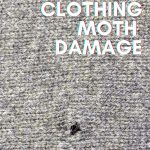
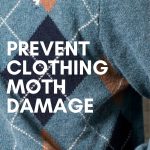



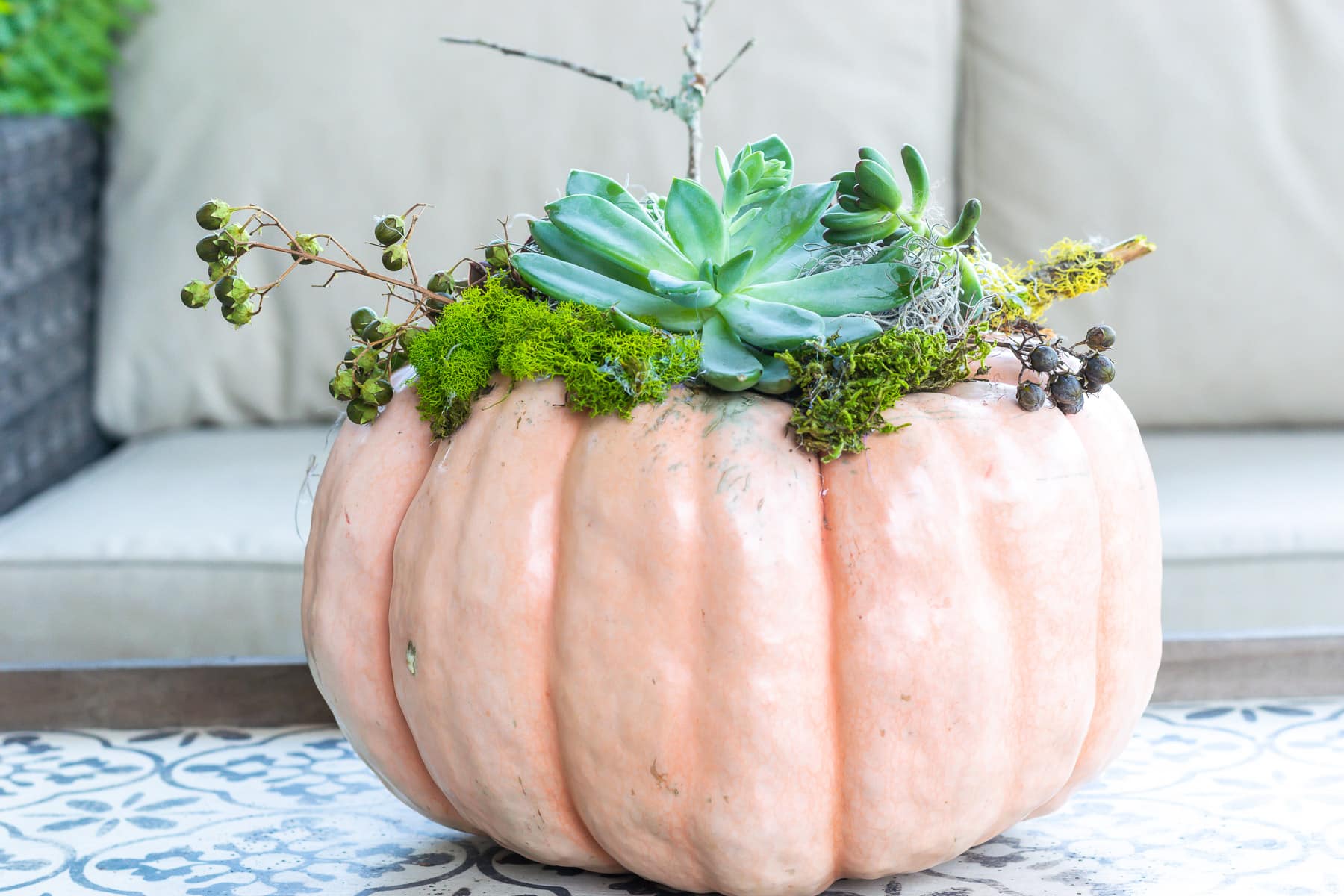


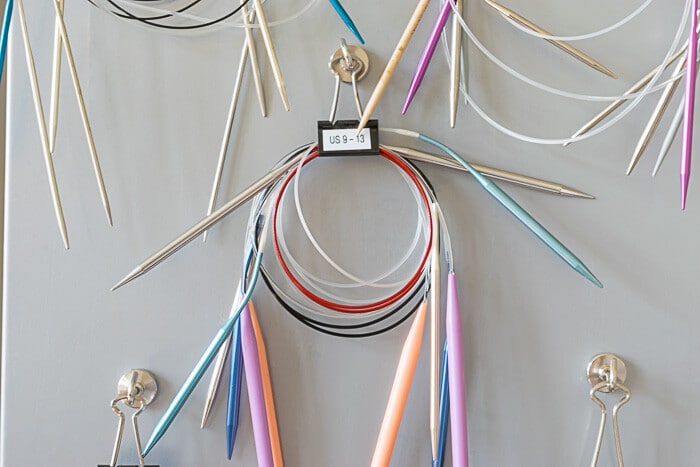
Thanku very much for a thorough insight into these lil buggers! 😡 have found a few pieces of treasured clothing sporting lil holes and seen one or two flying around my walk in robe 😨😤😡
I’ve bought the lil hanging plastic satchels and wondered what on earth they were letting off into that enclosed space! U don’t really think about the danger or health aspect as u just think they’re safe and will eliminate the problem..now I know better..again thanku and much appreciate all your research.
Cheers Kaz 😆
Freezing works beautifully and without chemicals.
Put garments in the freezer (or outside if it’s cold enough – I store my wool yarns outside in the winter). Leave for a week to kill the moths, bring inside for a week to allow eggs and pupae to hatch and get going and then freeze for another week.
Thanks so much, Margaret! It is so helpful to have first-hand experience with these tips. And I’m all about finding non-chemical ways to deal with little nasties.
Have a great day!
Lynn
Your comprehensive guide on keeping clothes-eating moths away is fantastic! The detailed steps on prevention, detection, and natural remedies are really informative. Thanks for providing such helpful advice to ensure our clothes stay safe and moth-free!
Thank you Alice! It’s my pleasure.
Keeping the house clean and sealing the entry points. Moth balls can also help in keeping them away. Always best to go for pest control services work and to cover the entire house and also drainage and restroom areas.